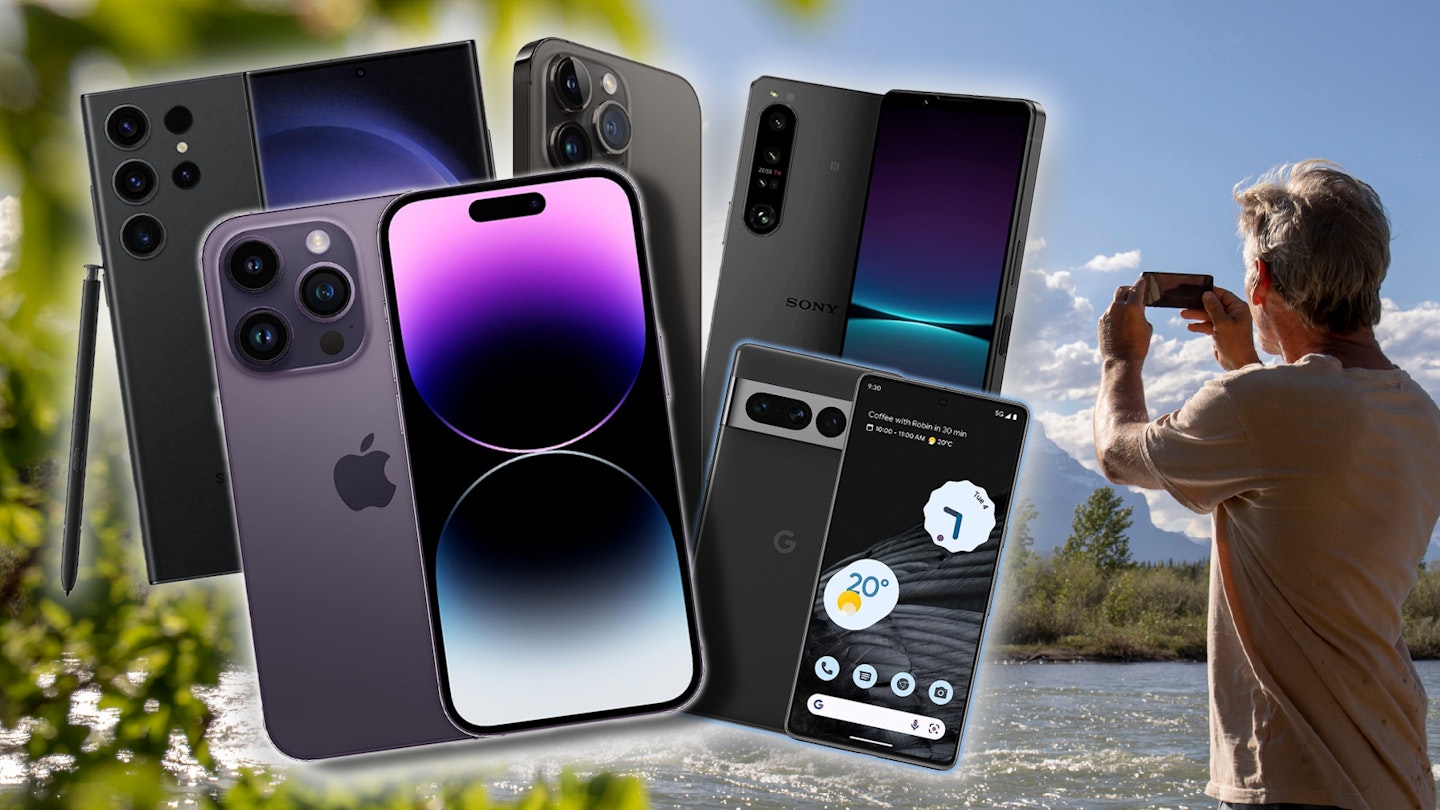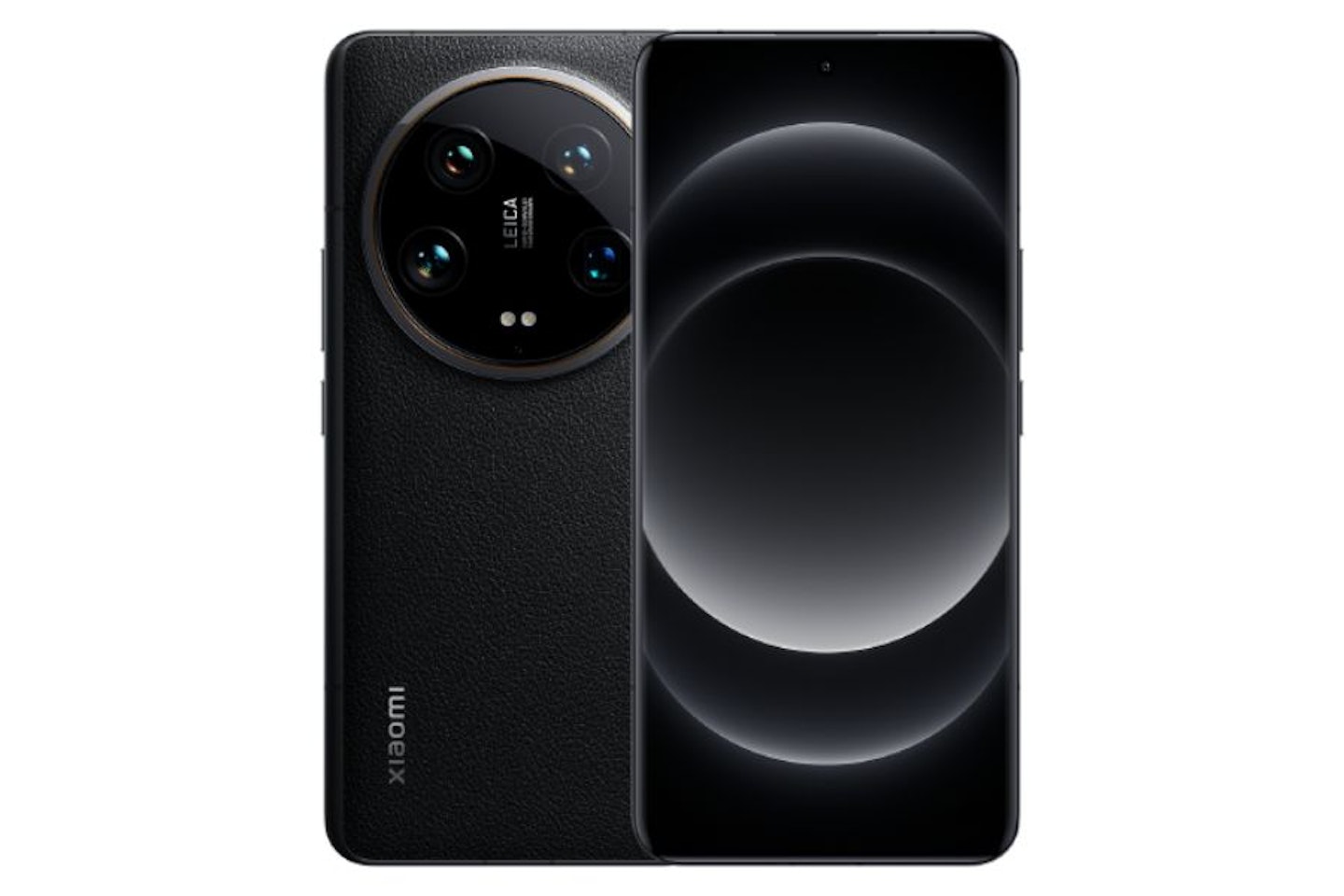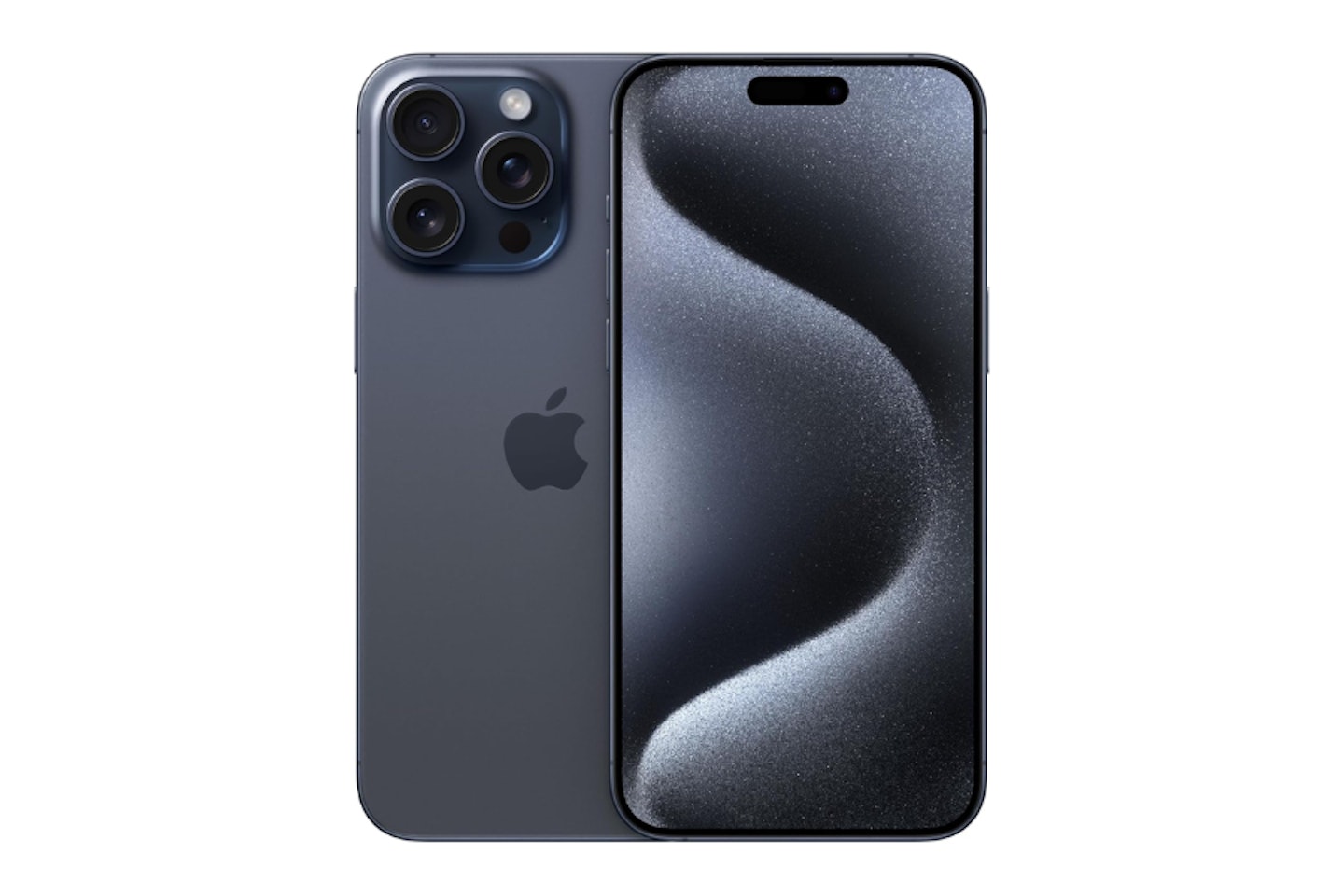As mobile phones become increasingly powerful, advances in camera technology have produced some of the best smartphones for photography we've ever seen. The best smartphones often have multiple lenses for different types of photographs – from main cameras at 200 megapixels with HDR, to dedicated selfie, macro and ultra-wide lenses. Many of these camera phones even compete with the features included in some high-end DSLR cameras.
For many, a high-quality camera on a phone is a key feature, rather than a luxury. And there's plenty that goes into making a smartphone camera great. From periscope lenses and large light sensors to powerful processing software, the leaps forward in recent years mean a smartphone camera is good enough to create photos worthy of hanging on the wall, as well as Instagram.
But cutting-edge smartphones for photography normally come with a premium price tag. Although you can find great cameras on some phones for less than £200, they just can't match the best. But with so many on the market, which deserve your focus?
If you want to capture crisp photos that you'd otherwise need an expensive camera to take, look no further. Let's zoom in and focus on finding the best smartphone for photography with our expert recommendations.
Best smartphones for photography at a glance:
Best smartphones for photography in 2025
All prices are correct at the time of writing. Prices, stock and deals are subject to change without notice.
The Xiaomi 14 Ultra has raised the bar for smartphone photography, but this phone isn't a one-trick pony. It offers an exceptionally polished all-round experience that puts the "big three" - Apple, Samsung and Google – in the shade.
Thanks to a huge 1-inch Leica sensor, this phone has a variable aperture that allows it to deliver exceptional images, even in low-light conditions. There are four lenses in total and six different focal lengths. All four lenses have a 50MP image sensor, while focal lengths vary from 12mm to 240mm, allowing for outstanding photography, whether you're up close, or at a distance. There are preset street photography modes, a Master Portrait mode, and a periscope lens which allows for exceptional quality images even when zooming in.
In addition, users can buy a dedicated professional photography kit for the phone, which effectively turns it into a compact camera. With an RRP of £179 it adds an extra cost to an already expensive handset. But it does have a 1500mAh battery built-in – ideal for long days where you're taking lots of photos, and you've already used your power bank.
If the camera is the star of the show, the backing singers are almost as impressive. The Xiaomi 14 Ultra uses Snapdragon's current flagship 8 Gen 3 processor, making this an extremely fast device. There's a Qualcomm Adreno GPU to help give graphics processing a boost, which is great for gamers. A 120Hz display is stunning to look at, while a 5000mAh battery is ably assisted by a suite of power management tools to help it last as long as possible between charges.
It's a brilliant all-round device. But it's the camera that beats everything else currently on the market.
Pros
- Exceptional camera
- Performs brilliantly in low light conditions
- Extremely fast performance
Cons
- Difficult to use one-handed
- Photography kit costs extra
| Camera | 50MP (main), 50MP (ultrawide), 50MP (telephoto), 50MP, (periscope), 32MP (front) |
| Display | 6.73-inch, 3200 x 1440 AMOLED |
| Processor | Qualcomm Snapdragon 8 Gen 3 |
| RAM | 16GB |
| Storage | 512GB |
| Battery | 5,000mAh |
| Dimensions | 161.4 x 75.3 x 9.2 mm |
| Weight | 224 grams |
Best budget
If you're on the hunt for a reliable, affordable phone that can still capture great images, look no further than the Google Pixel 8a. Featuring a dual rear camera system, the main camera is a seriously impressive 64MP wide lens. The second ultra-wide lens is 13 MP, as is the front camera. So, you'll be able to capture sharp details at resolutions normally found on professional gear. The image processing software is what makes this really shine, with advanced features like low light enhancement, fixing blur and more. A Magic Eraser feature will even let you remove distractions from the background of your shots.
Okay, so there may not be multiple lenses or a wide selection of features, unlike some of the other models here. But less is more with a budget smartphone, and all the money has gone where you need it the most: the main camera.
The Google Pixel 8a is competing with other smartphones on camera quality that are over twice its price, which is why we think it's the best budget smartphone for photography by quite a margin. And Google promises seven years of security and software updates as well, more than almost any other phone manufacturer.
Pros
- Google build and design alone makes this one of the best cameras for under £500
- Ultra-responsive and smooth to use thanks to the OLED screen and Tensor G3 processor
- Seven years of software support from Google
Cons
- Uses the same camera array as the Pixel 7a
| Camera: | 64MP (main), 13MP (ultrawide), 13MP (front) |
| Display: | 6.1-inch, 1080 x 2400 OLED |
| Processor: | Google Tensor G3, Titan M2 security coprocessor |
| RAM: | 8GB |
| Storage: | 128GB / 256GB |
| Battery: | 4492mAh |
| Dimensions: | 152.1 x 72.7 x 8.9 mm |
| Weight: | 188 g |
3.
OnePlus 12
Best for portraits
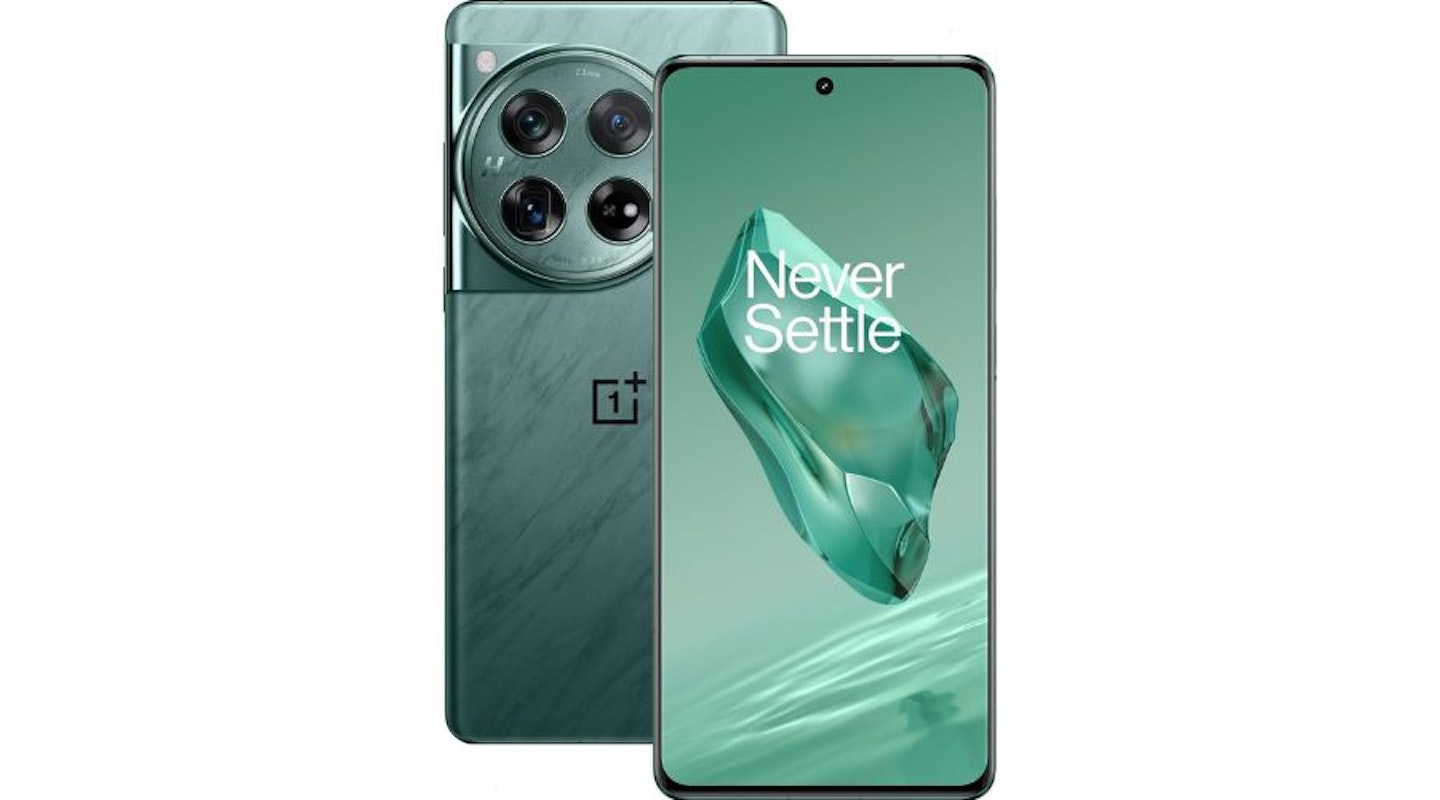 OnePlus
OnePlusOnePlus once again collaborated with Hasselblad to produce the cameras on the OnePlus 12. And the result is one of the best cameras on the market, that's particularly strong when it comes to portrait photography.
We'll start with the basics: sharing the same Snapdragon 8 Gen 3 that's in the Samsung Galaxy S24 Ultra, the OnePlus 12 comes with either 12GB or 16GB of RAM, and either 256GB or 512GB of storage. The large 6.82-inch display has a 120Hz refresh rate, making it beautiful to watch movies or play games on. It also offers superb battery life and supports super-fast charging.
The OnePlus 12 offers a 50MP main camera, a 48MP ultrawide, and a 64MP telephoto lens on the back, us a 32MP selfie camera. It lacks the zoom capabilities of the very best smartphones, and it can take a bit more effort to get good macro images than on other devices. But Hasselblad's expertise has been used to enhance the image processing, trying to recreate traditional Hasselblad-type photos. The results are particularly strong for portrait photography – so if that's what you mainly capture, this is a phone to look at.
Pros
- OnePlus fast charging is hugely impressive
- Powerful processor makes this a great all-round device
- Camera is particularly good for portrait photos
Cons
- Splashproof, rather than waterproof
| Camera: | 50MP (wide), 48MP (ultrawide), 64MP (telephoto), 32MP (front) |
| Display: | 6.82-inch, 1440 x 3168 pixels OLED |
| Processor: | Qualcomm Snapdragon 8 Gen 3 |
| RAM: | 12GB / 16GB |
| Storage: | 256GB / 512GB |
| Battery: | 5,400mAh |
| Dimensions: | 164.3 x 75.8 x 9.2 mm |
| Weight: | 220 g |
Best Google smartphone
Our experts have been spoilt for choice when it comes to choosing the best smartphone for photography, and honestly, the Pixel 8 Pro, alongside the Samsung Galaxy S24 Ultra and the iPhone 15 Pro Max, could easily have claimed the top spot.
The Pixel 8 Pro offers the sort of specs you'd expect from one of the best Android smartphones – 12GB of RAM, a Tensor G3 chip, and a beautiful 6.7-inch display that's arguably superior to that of the iPhone 15 Pro Max. In camera terms, it has a 50MP main camera, supported by a 48MP telephoto lens, and a 48MP ultrawide shooter. It includes Pro Controls, which allow you to adjust shutter speed and focus, much like you would find on a DSLR camera. The aperture is large to let plenty of light in, ensuring that this phone can deliver outstanding photos.
But it's the processing software that makes this phone shine. As well as automatically adjusting images to improve colour and brightness, the Magic Editor tool allows you a huge amount of control over how your photo looks. This includes features such as Magic Eraser and Best Take, among others.
We'd say the Pixel series currently offers the best AI-aid for getting the most from your photos. But it's an excellent all-round device.
Pros
- Some of the best photo-processing software currently available
- AI features are useful for screening calls and spam texts
- Longevity thanks to seven years of software updates
Cons
- Design hasn't changed for several years now
| Camera: | 50MP (main), 48MP (telephoto), 48MP (ultrawide, 10.5MP (front) |
| Display: | 6.7-inch, 1344 x 2992 pixels |
| Processor: | Google Tensor G3, Titan M2 security coprocessor |
| RAM: | 12GB |
| Storage: | 128GB, 256GB, 512GB, 1TB |
| Battery: | 5050mAh |
| Dimensions: | 162.6 x 76.5 x 8.8mm |
| Weight: | 213 g |
Best iPhone
Sometimes our experts have something of a dilemma when selecting the best products. This is almost the same model as the iPhone 15 Pro, but bigger and with a few upgrades over the smaller version.
In our full review of the earlier model – the Apple iPhone 14 Pro Max – we were blown away by that amazing pro camera system. There's not a huge leap being made here, with much the same lens and resolution options as its predecessor, including some optical zooming. However, the 6.7" Super Retina XDR screen makes reviewing those 48MP shots an absolute joy, and now it's packaged into a titanium body. The A17 Pro chip adds one more core to the GPU over the 14 Pro Max.
And of course you have that 12MP Ultrawide lens, and the 12MP 2x Telephoto; plus, Portrait mode, Depth Control, Portrait Lighting, Smart HDR 4, and 4K Dolby Vision HDR video up to 60 fps. The 5X optical zoom gives this the edge over the 3X optical zoom on the regular iPhone 15 Pro, alongside an enhanced 6-axis stabiliser to help keep the camera steady.
Again, the iPhone 15 Pro is IP68 splash, water, and dust Resistant – so you'll be confident in taking this out into the wild for your photography projects in no time. At this price, though, you will definitely want to invest in one of the best phone cases you can find.
Pros
- Brilliant main camera resolution with support for RAW shooting
- Lots of manual controls and a huge screen to enjoy it all on
- Sturdy Apple build and OS with USB-C support for power and external devices
Cons
- Get it if you want the latest model – but not a huge difference from the iPhone 14 Pro
- Large (of course) but you'll need something special to carry it in.
| Cameras: | 48MP (main), 12MP (ultrawide), 12MP (telephoto), 12MP (front) |
| Display: | 6.7-inch Super Retina XDR OLED, 2796 x 1290 pixels |
| Processor: | A17 Bionic chip |
| RAM: | 6GB |
| Storage: | 256 GB |
| Battery: | Unspecified |
| Dimensions: | 159.9 x 76.7 x 8.25 mm |
| Weight: | 221 g |
Best Samsung smartphone
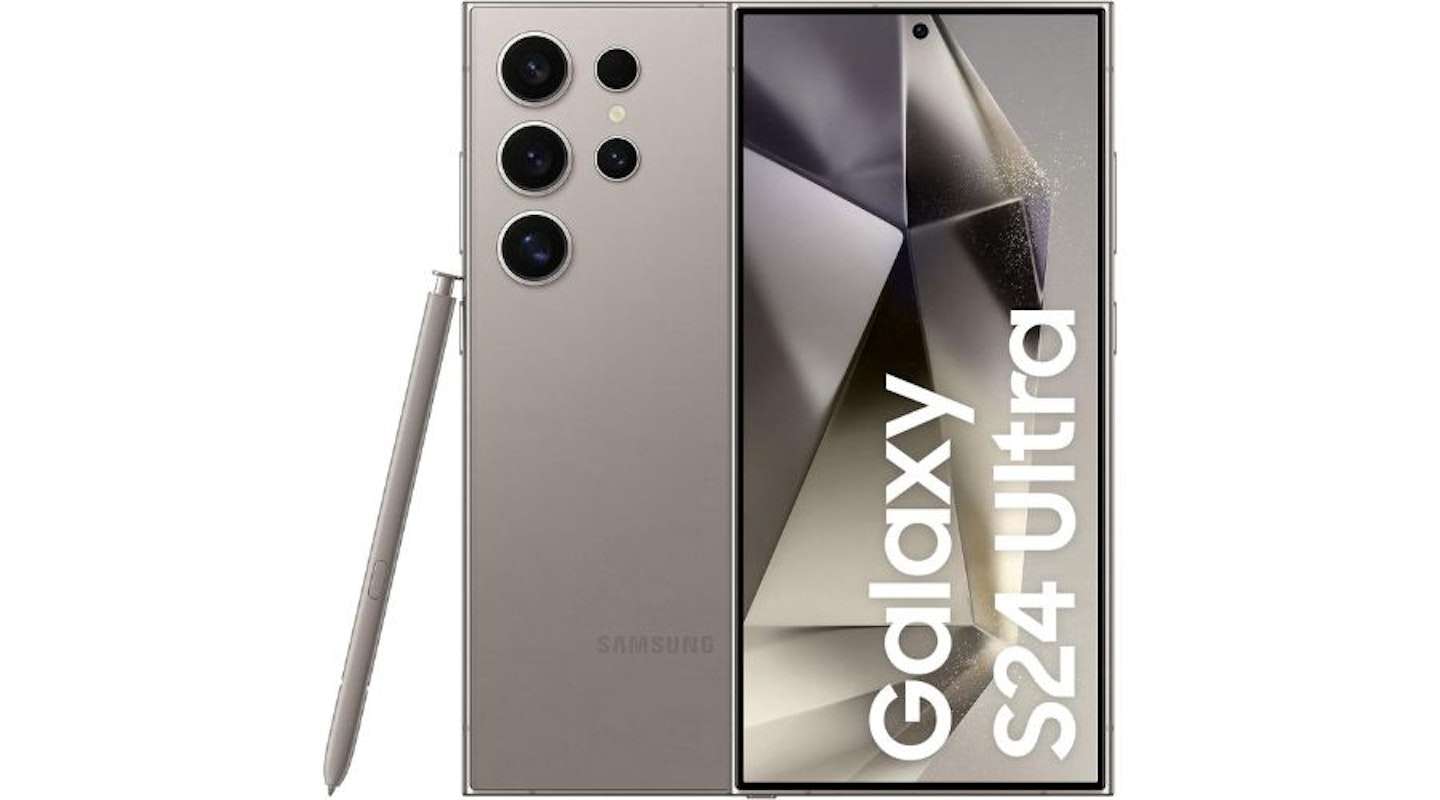 Samsung
SamsungThe Samsung Galaxy S24 Ultra is the best phone Samsung has ever made. And in photography terms, it's an absolute superstar. There are four cameras on the back of the phone – the 200MP main shooter is accompanied by a 12MP ultrawide and a 10MP telephoto lens. There's also a new 50MP zoom periscope camera, which improves the telephoto capabilities of the device. It's a seriously impressive camera array, built to be useful in almost any situation. Low light, zoom, or macro, this phone can do it all.
It's helped in no small part by the Snapdragon 8 Gen 3 chip, and the 12GB of RAM under the hood that make this a powerful and responsive handset. The post-processing software also uses AI to try and produce the best images possible. Samsung also offers a wide range of photo modes, including Portrait, Night, and Food, to try to produce the most suitable colour balance for the type of subject you are capturing.
And there's more. A beautiful 6.8-inch QLED display has a 120Hz refresh rate, great for gaming, watching movies, and looking at all those photos you just took. It's an extremely well-balanced package, and a worthy alternative if you don't want to use an iPhone.
Pros
- The stunning 200MP wide camera plus telephoto lens gives you lots of options for your photos
- Beautiful QLED display is perfect for gaming and watching films
- Powerful processor makes this a powerhouse
Cons
- It's really big, which may be off-putting for some
| Camera: | 200MP (wide), 50MP (periscope telephoto), 10MP (telephoto), 12MP (ultrawide), 12MP (front) |
| Display: | 6.8-inch, 3120 x 1440 pixels |
| Processor: | Snapdragon 8 Gen 3 |
| RAM: | 12GB |
| Storage: | 256GB / 512GB / 1TB |
| Battery: | 5000mAh |
| Dimensions: | 162.3 x 79.0 x 8.6 mm |
| Weight: | 232 g |
Best for beginners
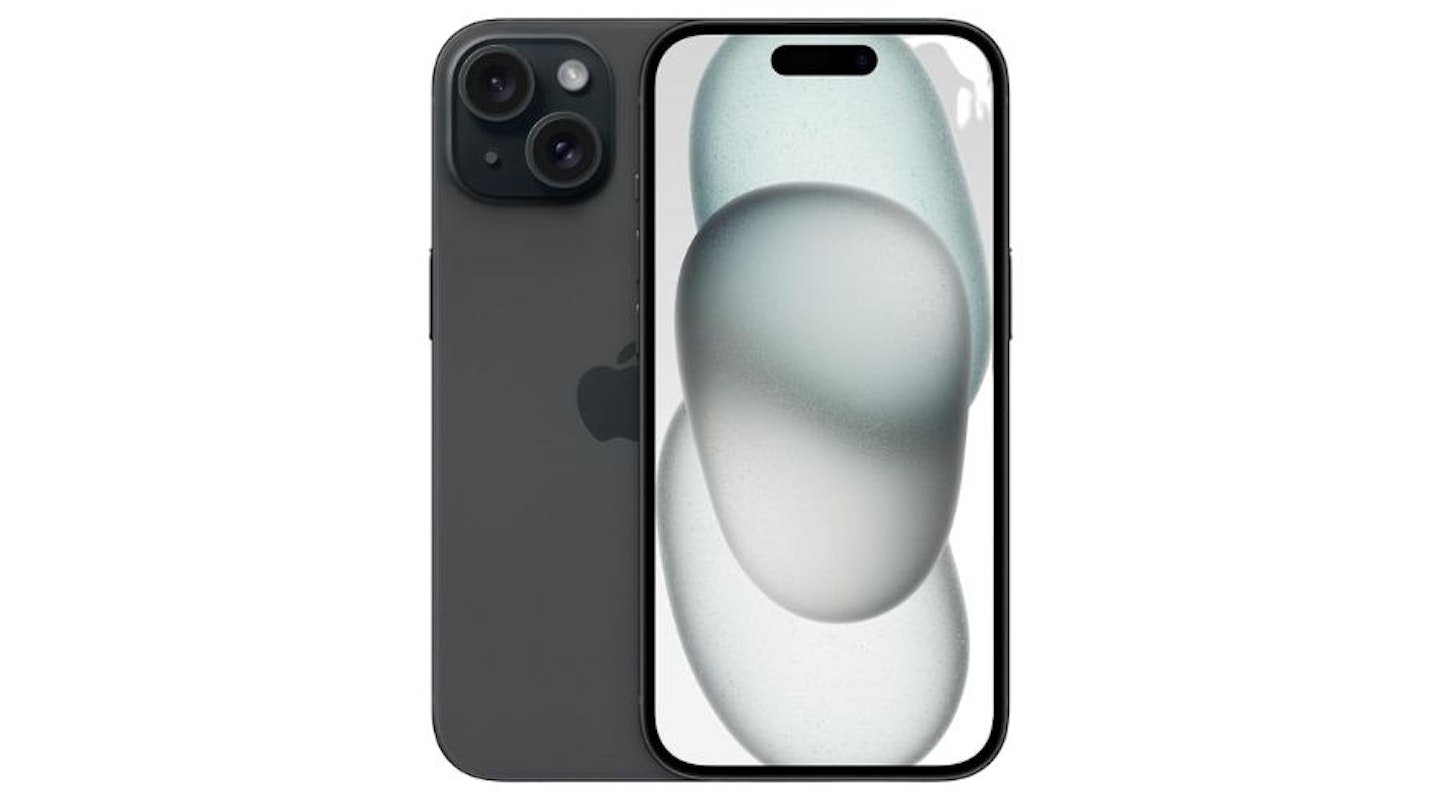 Amazon / Apple
Amazon / AppleJohn Lewis & Partners
If you're looking for a good quality camera in a phone that's easy to use and doesn't cost as much as the ultra-premium models, then the iPhone 15 may be just right. The RRP is £799 – that's around £200 less than an iPhone 15 Pro, and £400 less than an iPhone 15 Pro Max. You're potentially saving a packet but still getting a very capable iPhone, albeit with fewer bells and whistles than on its 'Pro' counterparts.
It's a smaller device, with a 6.1-inch Retina XDR display that's lovely to look at. The smaller size will certainly appeal to anyone who prefers to use their phone one-handed or fit it easily in a pocket. It also has 6GB of RAM and uses Apple's A16 Bionic chip – the same one used on the iPhone 14 Pro. It's more than fast enough for most daily uses. It also benefits from replacing the lightning cable with a USB-C port, alongside the rest of the iPhone 15 range.
The iPhone 15 has a dual-camera system on the back – a 48MP main lens, and a 12MP ultrawide, plus a 2X optical zoom. This doesn't compete with the best telephoto cameras and is one of the most notable differences between this handset and the Pro variants. The main camera now takes 24MP images instead of the 12MP found on earlier models, instantly providing better images than before. Apple's photo-processing technology is also very good, and even allows you to edit what you focus on after a photo has been taken.
Is it the best camera? No. But, if you want good photos without a lot of work, the iPhone 15 is currently one of the best options out there.
Pros
- Smaller and lighter than many of the phones on this list
- iOS is exceptionally user-friendly
- Cheaper than the 'Pro' versions of the iPhone 15
Cons
- 60Hz screen refresh rate is disappointing compared to rivals
| Camera: | 48MP (main), 12MP (ultrawide), 12MP (front) |
| Display: | 6.1in Super Retina XDR OLED |
| Processor: | Apple A16 Bionic |
| RAM: | 6GB |
| Storage: | 128GB / 256GB / 512GB |
| Battery: | Unspecified |
| Dimensions: | 147.8 x 71.6 x 7.8 mm |
| Weight: | 171g |
Best low light smartphone
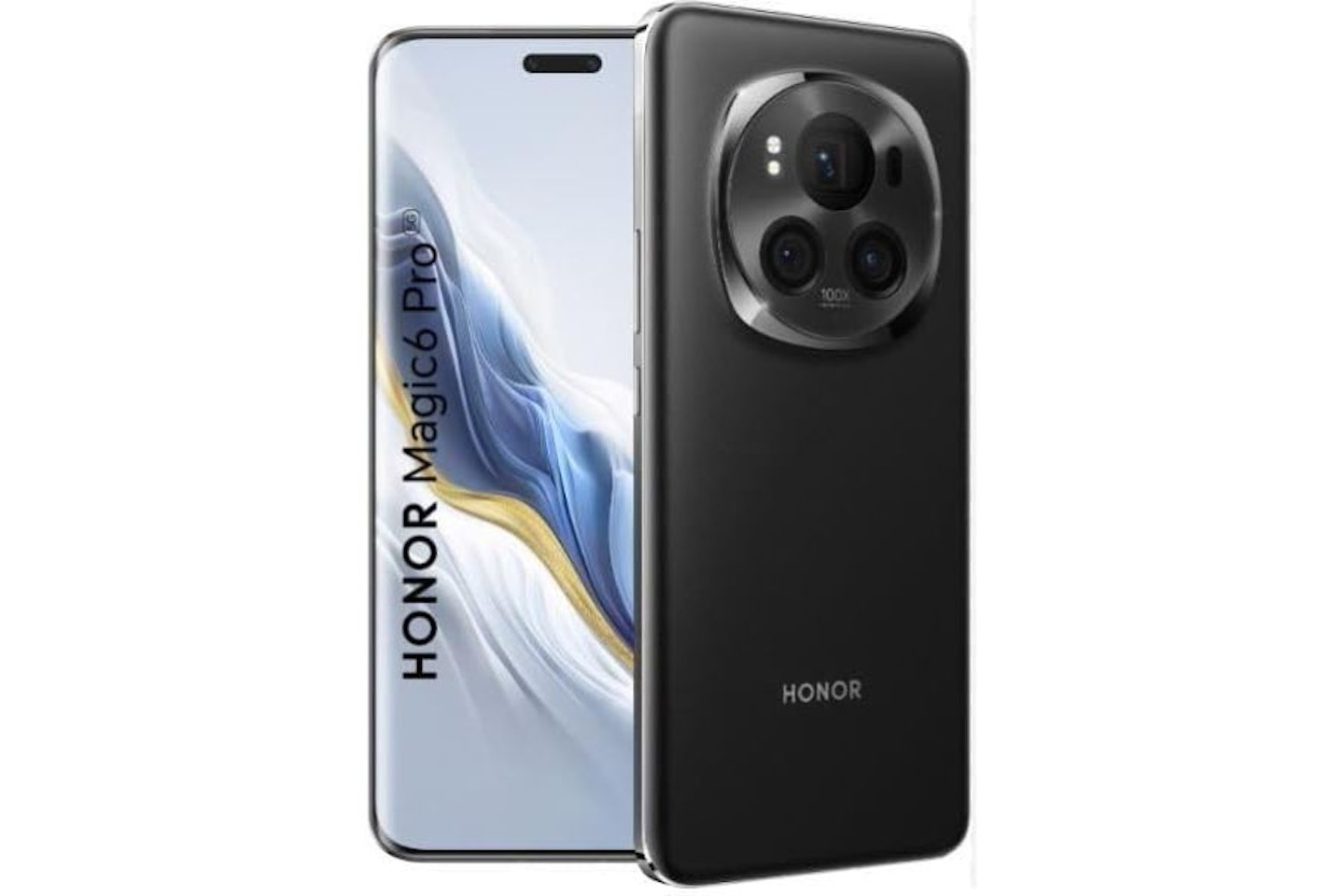 Honor
HonorHonor has been working hard on its camera phones since emerging as a separate entity from parent company Huawei (itself a company with an excellent reputation for its phone cameras). The Honor Magic 6 Pro is honor's current flagship, and the triple-array camera system, offering a 180MP telephoto camera, earns it a spot on our shortlist. It's the largest telephoto sensor on a phone so far.
Telephoto images aren't the best on the market because this phone only supports a 2.5x optical zoom, meaning anything beyond this is digitally cropped. But thanks to the AI on this phone, low light photography is generally excellent. The AI offers detail reconstruction, while denoise algorithms help to produce rich and vibrant scenes. Not necessarily the truest representation of the scene, but certainly great to look at. The 50MP wide lens has an adjustable aperture, and automatically switches to an f/1.4 aperture in low-light – letting more light in as a result.
General performance is solid, with 12GB of RAM, a flagship Snapdragon 8 Gen 3 chipset, and a 120Hz curved display that also filters out blue light and night, to help improve your sleep quality. Four years of Android updates and five years of security updates mean this phone should be good to last you for years as well.
The battery is also excellent, boasting a 5600mAh silicon-carbon battery. Silicon-carbon batteries are potentially more sustainable than lithium-ion, safer, and offer higher energy density. That means a larger energy capacity without a larger battery – potentially up to two days between charges.
Pros
- Excellent battery life
- Superb display
- Good camera
Cons
- Curved display won't be popular with everyone
- Camera, while versatile, can be a little inconsistent
| Camera: | 50MP (main), 180MP (telephoto), 50MP (ultrawide), 50MP (front) |
| Display: | 6.8-inch OLED, 2800 x 1280 pixels |
| Processor: | Qualcomm Snapdragon 8 Gen 3 |
| RAM: | 12GB |
| Storage: | 512GB |
| Battery: | 5,600mAh |
| Dimensions: | 162.5 x 75.8 x 8.9 mm |
| Weight: | 229 g |
Best foldable smartphone
If a great camera is your primary concern, then a foldable phone potentially isn't the best choice. Most of the money goes into screen technology. But if you want the best camera you can get on a foldable phone, we think the Google Pixel Fold just edges it.
The Pixel Fold has an excellent 5.8-inch secondary display on the cover, while the 7.6-inch main display looks fantastic. Both screens are OLED with 120Hz refresh rates. The Tensor G2 chip isn't as advanced as the G3 chip found in the Pixel 8 series, but it's still quite punchy, especially alongside the 12GB of RAM this phone comes with. Google also promises three years of software updates, and five years of security updates for this device.
As you'd expect from Google, the cameras are excellent, if perhaps not quite as good as those on the Pixel 8 Pro. The three cameras on the rear consist of a 48MP main lens, a 10.8MP telephoto camera and a 10.8MP ultrawide shooter. Crucially, you get many of Google's excellent photo editing tools, such as Magic Eraser and Photo Unblur, to help make all your photos look as good as possible.
Foldable phones are currently a lot more expensive than more conventional handsets, and you'll pay a premium for the design. The cameras aren't the absolute best, but the Pixel Fold currently offers the best cameras within the foldable category.
Pros
- Beautiful displays
- Access to Google's excellent photo editing software
- Some of the best cameras on a foldable device
Cons
- Eye-wateringly expensive
- Older G2 chipset
| Camera: | 48MP (main), 10.8MP (ultrawide), 10.8MP (telephoto), 9.5MP (front), 8MP (inner) |
| Display: | 7.6 inch OLED, 2208 x 1840 pixels (main), 5.8-inches OLED, 2092 x 1080 pixels (secondary) |
| Processor: | Google Tensor G2 |
| RAM: | 12GB |
| Storage: | 256GB / 512GB |
| Battery: | 4,727mAh |
| Dimensions: | 139.7 x 79.5 x 12.1mm (folded), 139.7 x 158.7 x 5.8mm (unfolded) |
| Weight: | 283g |
10.
Sony Xperia 1 V
Best for photography enthusiasts
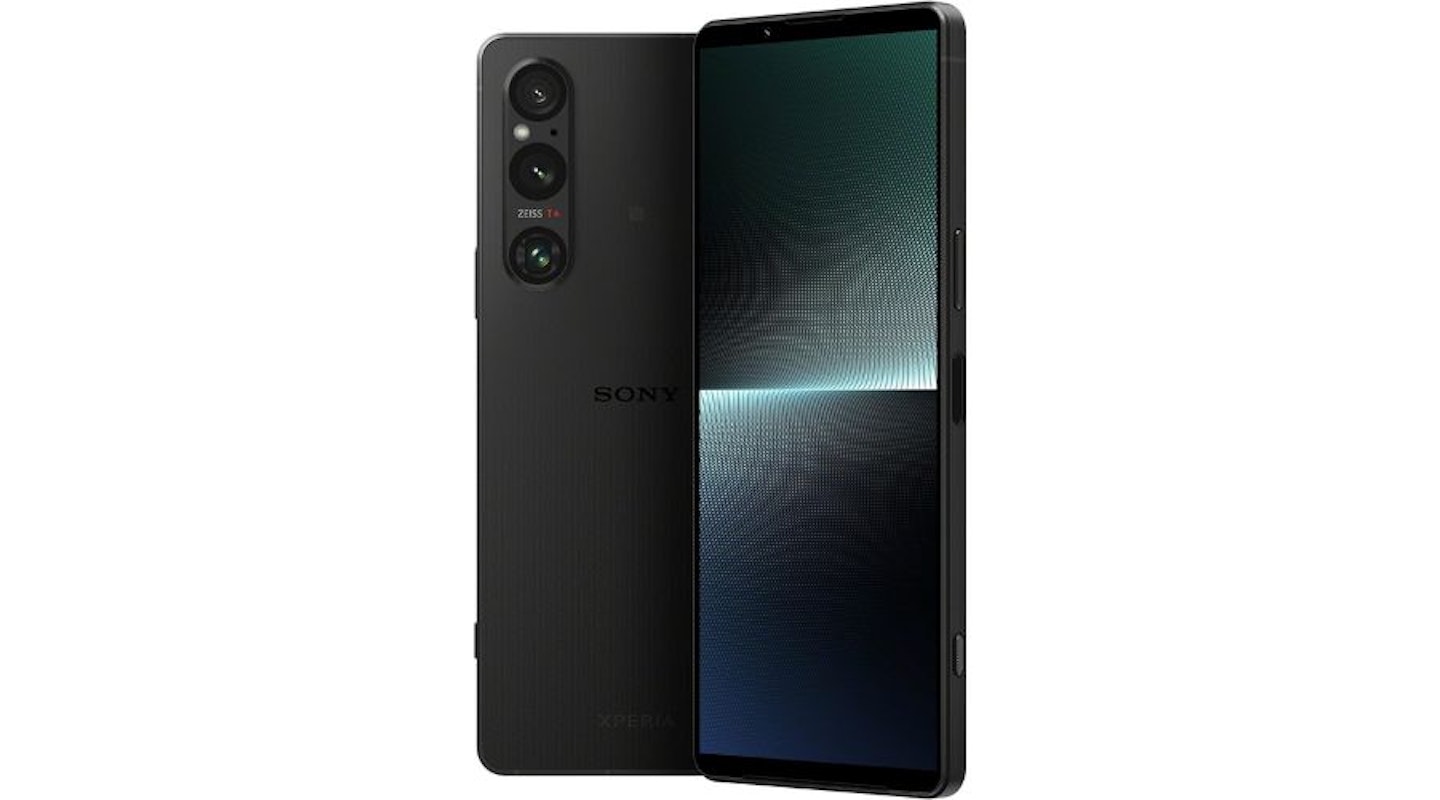 Sony
SonyIf you're already an experienced photographer who likes to tweak all the settings for every image they capture, the Xperia 1 V could be perfect for you. While most other brands try to make things as easy as possible for users, Sony really leans into the freedom it gives users to make their own choices with their photography.
This means that anyone who wants a basic point-and-click setup where the phone does most of the heavy lifting, should probably look elsewhere. But for enthusiasts, there's a lot to like. There is a Basic mode which offers point-and-click photography, but that's not what this phone is built to do. Instead, the Photography Pro app allows you to alter things such as ISO, white balance, focus type, and much more.
There are three cameras on the back: a 52MP main lens, a 12MP ultrawide, and a 12P telephoto shooter. The Xperia 1 V also has a new Exmor T sensor, which is designed to capture more light and reduce noise in any images. This enormously improves low-light performance.
The 6.5-inch 4K OLED display is taller and narrower than most phones but looks great and is ideal for watching widescreen media. 12GB of RAM and a Snapdragon 8 Gen 2 processor mean this is a powerful, fast phone, although not quite at the front of the pack.
In the right hands, this phone can deliver outstanding photos – provided you're willing to put in the work. If not, we'd suggest finding an alternative.
Pros
- 4K display is great for gaming and watching films
- A flagship phone with a 3.5mm headphone jack
- Camera is excellent if you know how to optimise it
Cons
- Novices will struggle to get the best possible images
| Camera: | 52MP (main), 12MP (ultrawide), 12MP (telephoto), 12MP (front) |
| Display: | 6.5-inch 4K OLED, 3840x1644 pixels |
| Processor: | Snapdragon 8 Gen 2 |
| RAM: | 12GB |
| Storage: | 256GB / 512GB, microSD up to 1TB |
| Battery: | 5,000mAh |
| Dimensions: | 165 × 71 × 8.3mm |
| Weight: | 187 grams |
How to choose the best smartphone for photography
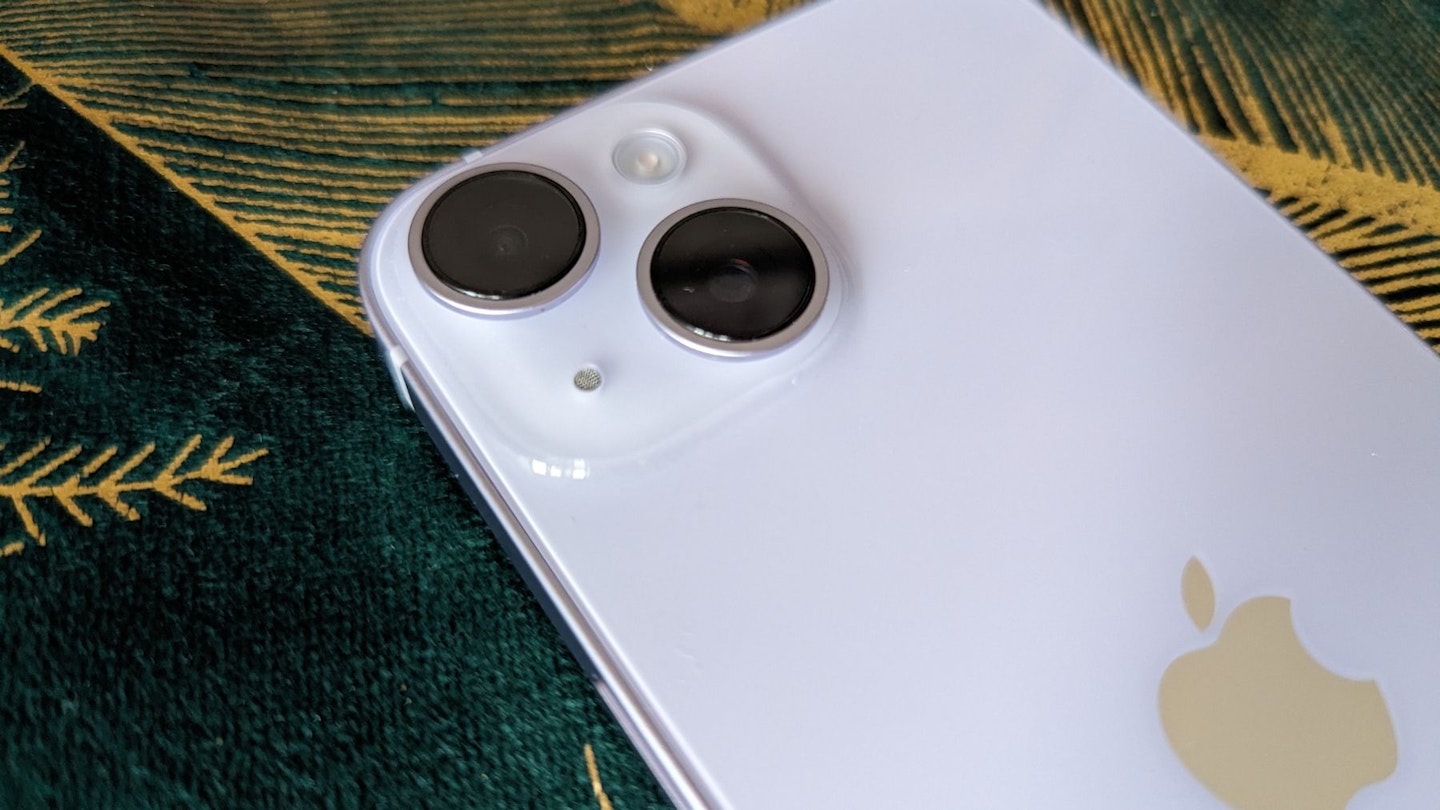
Don't overspend (unless you want to)
Although it may seem that only Apple iPhones or other phones over £1000 can take excellent photos, we're here to tell you that's not entirely true. Some of the best phones for less than £300 are great budget choices for smartphones for photography too. And there's plenty under £1000 in our selection above, of course.
As always, set a realistic budget and stick to it. You can sacrifice expensive features you know you won't need, pop-up selfie cameras or very large screens for example, and make sure all your money is going into the best lenses, sensors and image quality.
Focus on the main lens and sensor
The current trend for cramming as many dedicated lenses into the best smartphones for photography is quite entertaining to see. Presumably, in a few year's time, the entire rear surface of your phone will look like one of Edgar Allen Poe's nightmares. But, more lens options doesn't necessarily win the race. At the moment there's always a main lens and accompanying sensor that's much better than the others on both counts. Yes, a 12MP photo shot with the wide angle lens is good enough to make a large poster print, but your 48MP main sensor, particularly if the lens has a low F-stop, is going to blow that out of the water in terms of pixel density. So, keep your main lens and sensor needs at the forefronts of you choice and you won't regret it.
Always over-estimate how much storage you'll need
The higher the resolution of the sensor behind your lens, the better the detail of your photograph. But, of course, then file sizes become equally huge too. To avoid frequently running out of space on your phone, you'll need as much storage capacity as possible. Otherwise, you'll have to repeatedly transfer your shots onto your computer to make room for new images. Many phones come with 64GB built-in as standard, with other versions available with more. Or, again depending on your choice, of phone, you may be able to buy an inexpensive memory card and slot that straight into your smartphone for instant expansion.
We recommend 128GB as a minimum. At best, go for smartphones for photography that can support higher, possibly up to a massive 1TB, via MicroSD card.
Don't forget your charger
In the push for less electronic waste, many manufacturers are releasing their smartphones without an included mains adapter for charging. This is great for those who have compatible chargers already, but for the rest of us we need to add one to our shopping baskets.
But, if you're going to be spending some extra cash, why not upgrade to something better than the bog-standard plug with a wire on the end? Depending on your model, some of the best smartphones for photography can be charged wirelessly. You just drop them onto the wireless phone charging pad and it'll take care of the rest.
Again, dependent on your model, there's fast charging. A fast charger does exactly that – a higher wattage is passed to your device, drastically shortening charging times.
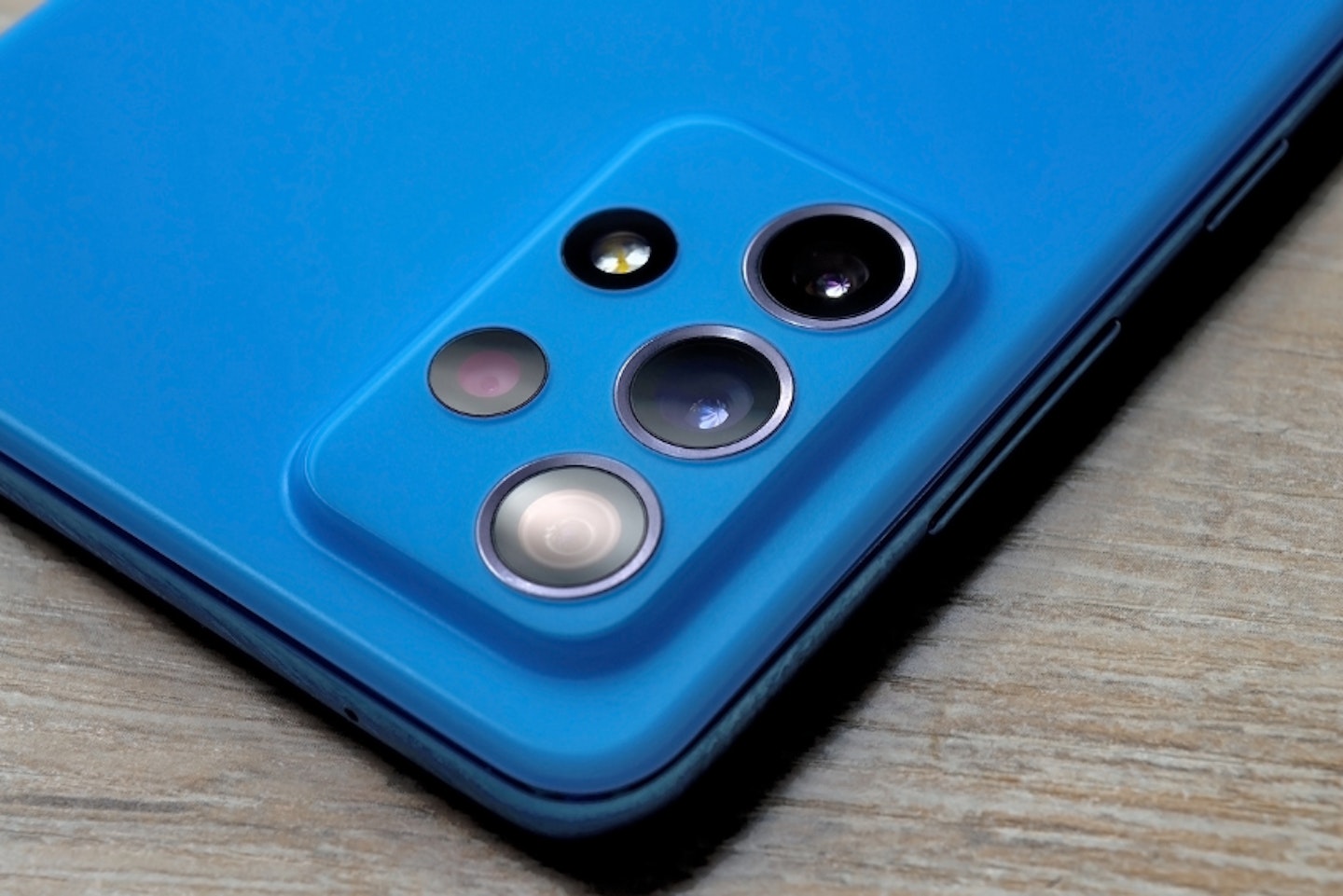
FAQs
What's the best smartphone for taking pictures?
Well, as we've seen with our pick of the best above - this is largely up to you and your photographic needs. In today's market, you'll struggle to find a smartphone that's 'bad' at taking photographs. But, as always, the better the lens and the higher the number of pixels the camera can capture is normally a sign of a better smartphone for photography. The rest comes down to the specific brand's strengths when it comes to colour accuracy and general image quality.
How many megapixels is best for a smartphone camera?
We recommend anything over 24MP. At the time of writing, may of top-end smartphones are using sensors capable of capturing a gargantuan 50MP – that's better than many DLSRs produced relatively recently.
What's the best screen resolution for a smartphone camera?
Screen resolution is how many pixels are on the screen. The higher the number of pixels, the clearer and sharper the images. If you're going to be using your smartphone for any serious photography, we recommend going for a higher screen resolution - such as 4K . For more on this in general, check out our guide to screen resolutions.
What's the best smartphone brand?
There is a huge range of excellent budget phone brands, but they're not all equal. Of course, it's hard to pick the ultimate phone brand because great phones come from even the most obscure brands. But there are definitely some reliable brands to look out for – Samsung, Google, Apple and Huawei in particular are fantastic phone brands worth keeping an eye on for great deals.
Can smartphones get viruses?
There's a common misconception that phones, including smartphones for photography, cannot be affected by a virus, but this is entirely false. A smartphone is just as, if not more vulnerable to viruses, malware, and especially scams. As we go about in public, phones are accessed over public Wi-Fi. If you're browsing the internet, certain webpages can install all sorts of malware in an instant; so it's best to access sites with absolute caution, be aware of what you're accessing, and perhaps use a form of VPN or anti-virus software.
The verdict
Smartphone cameras are better than they've ever been. While this is great for us as consumers, the difficulty of knowing which phone is best for you has arguably never been greater. The right device will ultimately differ from person to person, but in terms of camera phones, the best iPhones, Samsung and Google devices are all going to provide consistently excellent results.
As we said earlier, the differences between the iPhone 15 Pro Max, Google Pixel 8 Pro and Samsung Galaxy S24 Ultra are negligible. All three are capable of delivering stunning images, and under certain conditions, any one may be better than another. And there’s always something new around the corner that pushes standards even higher.
If you already use Apple products, an iPhone will be instantly familiar to you, and incredibly user-friendly. Android devices allow you a lot more customisation, and different manufacturers put their own spin on the underlying operating system. Pixel phones will give you the 'stock' Android experience, which is generally clean and easy to navigate. Samsung has a slightly busier version of Android, but as one of the world's most popular phone brands, it will be familiar to many.
How we chose
When creating our shortlist, we looked for devices from brands that have a proven track record for delivering high-quality images. Factors such as the aperture and sensor specifications, the number of megapixels the cameras can capture, and how good the post-processing software is, also influenced our choices.
Why should you trust us?
At What's The Best, our mission is to provide accurate and reliable reviews, ensuring our readers receive honest and transparent information about the best technology products available. Anything less would undermine our commitment to being a trusted source of unbiased product information.
Our dedicated in-house writing team comprises experts with extensive experience and a genuine passion for technology. Collectively, we have spent decades testing and writing about tech, leveraging our expertise in all our articles, advice pieces and reviews.
We maintain complete editorial independence and do not accept payment for product reviews. Our writers have full control over their content, ensuring that products are selected based solely on the needs of our readers. While we may earn commissions or other compensation from links on our website, this never affects our product choices. These links enable us to continue offering valuable consumer advice, without compromising the integrity of our reviews.
Chris Duffill is a Senior Tech Writer and Reviewer for What's The Best, Closer, Yours, Heat and more. He’s an experienced bargain-hunter - finding genuine deals on electronic and audiovisual tech from the best brands. His background includes writing, editorial, marketing, design, video production and photography.
He specialises in home entertainment and audiovisual tech, including speakers, amplifiers, turntables, streaming media players, and TVs. He is also one of our resident experts in computing (PCs, tablets, smartphones, smartwatches), DSLR photography and all kinds of digital cameras. He also writes about retro gaming, game consoles and various electronic gadgets. If it plugs in, lights up or makes a noise, he’ll write about it.
Subscribe to the What's The Best Newsletter to keep up to date with more of the latest reviews and recommendations from the rest of the What’s The Best team.
